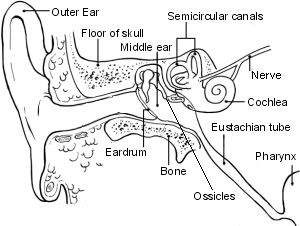Vestibular Rehabilitation

What is BPPV?
Benign Paroxysmal Positional Vertigo (BPPV) is an onset of dizziness that is caused by otoconia (“ear rocks/crystals”) being dislodged from the utricle (“their home”) into one of the semicircular canals (posterior, anterior, or horizontal).
When this occurs, you will typically experience symptoms of dizziness with positional movements. Examples include, but are not limited to: sitting up in bed, leaning over to retrieve an object from the ground, or looking up to retrieve an object from an overhead shelf.
Physical therapy can assist with resolution of your symptoms by first assessing which semicircular canal the “rocks/crystals” have been dislodged into. After making a diagnosis, maneuvers will be performed manually by the physical therapist to reposition the “rocks/crystals” back into the utricle (“their home”).
Following the maneuvers, you will be asked to abide by a few restrictions in order to allow the “rocks/crystals” to settle. Abiding by these restrictions will prevent dizziness symptoms from re-occurring. You may experience minimal symptoms of light-headedness, nausea, or dizziness following the maneuvers. Likely, you will be asked to return for at least one more appointment after your initial evaluation to ensure symptoms have resolved completely.
What causes BPPV?
BPPV can originate from a variety of causes including recent head trauma, a whiplash injury, a car accident, an airplane ride, or a roller-coaster ride. It also can occur from maintaining your head in the same position for an extended period of time, such as a trip to the dentist or to the hair stylist. However, please note that it is possible for BPPV to occur without any known cause.
